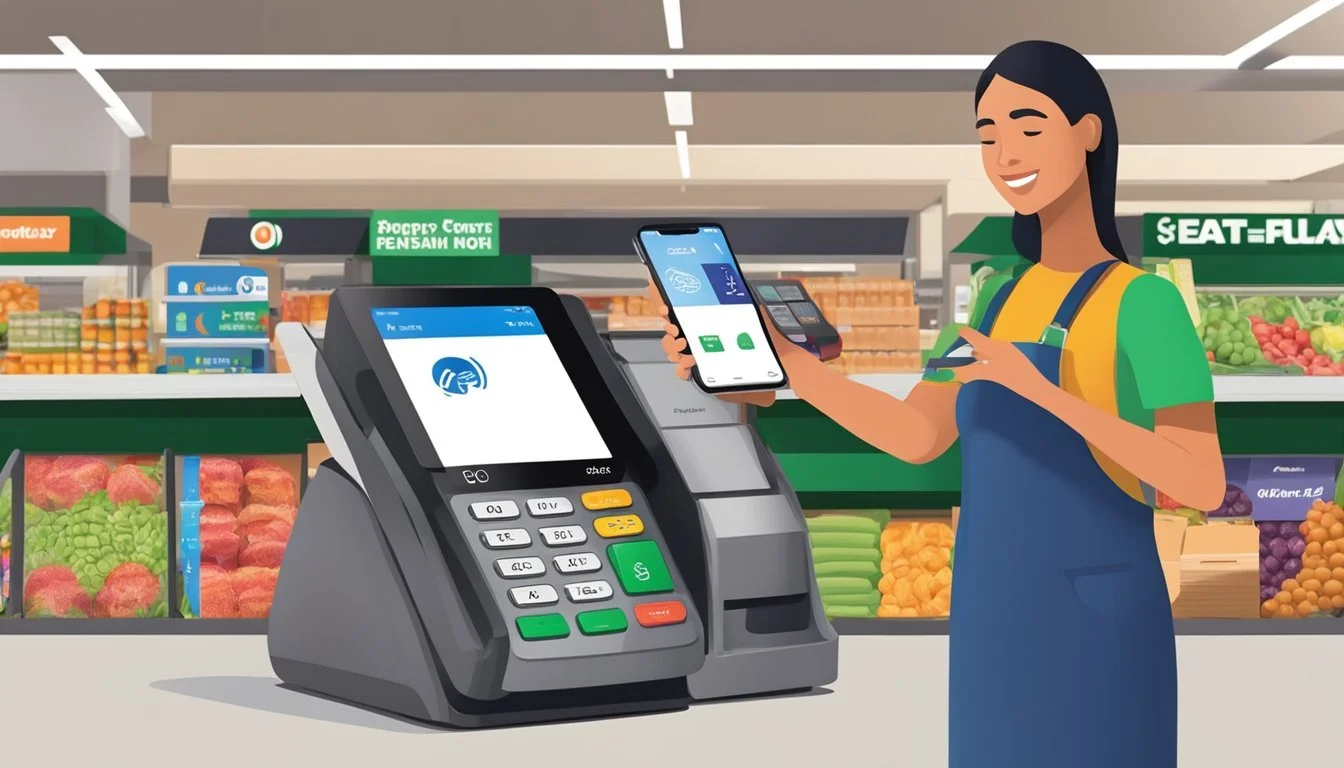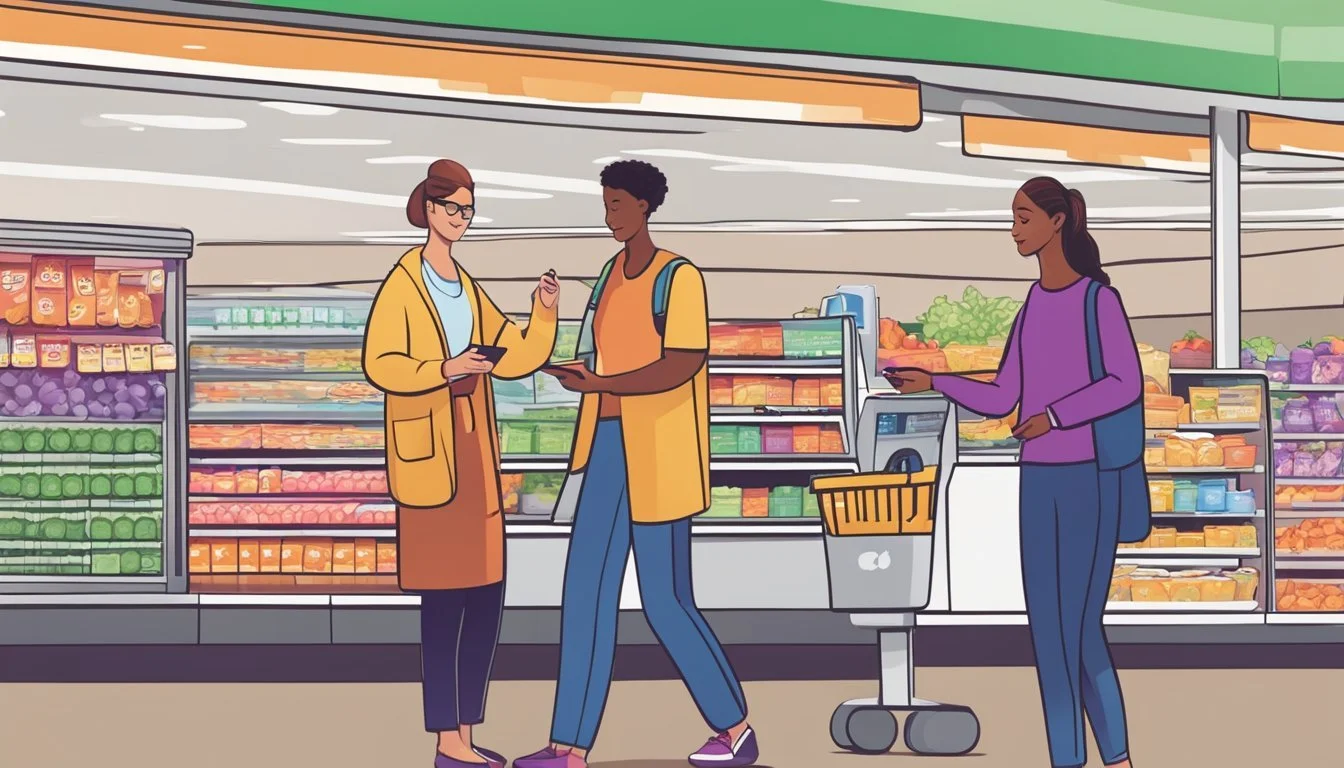Does Stop & Shop Take Apple Pay?
Payment Methods Explained
Many shoppers today seek convenient and modern payment options. One common question is whether Stop & Shop accepts Apple Pay as a method of payment. Yes, Stop & Shop accepts Apple Pay at all of their supermarket locations.
Mobile payment systems like Apple Pay offer a fast and secure way to complete purchases. Shoppers at Stop & Shop can enjoy the flexibility and ease that Apple Pay provides, enhancing their overall shopping experience.
By integrating Apple Pay, Stop & Shop ensures that their customers have access to one of the most popular and trusted mobile payment methods. This addition makes shopping not only convenient but also aligns with current consumer preferences for digital payments.
Understanding Apple Pay
Apple Pay is a digital wallet service by Apple that revolutionizes the way users make payments with their devices. It combines ease of use with robust security features.
What Is Apple Pay?
Apple Pay is a contactless payment method integrated into iPhones, iPads, and Apple Watches. Introduced in 2014, it allows users to make secure payments in stores, apps, and on websites. Users can add credit and debit cards to their Apple Wallet, and transactions are authenticated via Touch ID, Face ID, or a device passcode.
How Apple Pay Works
When a user makes a payment, Apple Pay uses a process known as tokenization. Instead of transmitting card details, it generates a unique token for each transaction. This boosts security by ensuring sensitive information is not shared with merchants. It employs the Secure Element (SE), a microprocessor chip that stores encrypted payment data and processes transactions through Near Field Communication (NFC) in supported devices.
Apple Pay Compatibility
Apple Pay is compatible with iPhone 6 and later models, iPads with Face ID/Touch ID, and Apple Watch Series 1 and later. It can be used in millions of locations worldwide that accept contactless payments. Merchants can accept Apple Pay payments through compatible devices and point-of-sale systems designed for contactless transactions.
Apple Pay supports a wide range of card issuers and networks, making it easy for users to add and manage their cards within the Apple Wallet app. This compatibility extends across various services and websites, further enhancing its convenience and utility.
Stop & Shop's Payment Methods
Stop & Shop offers a variety of payment methods to cater to its diverse customer base. These include traditional payment options and modern digital solutions, ensuring convenience for all shoppers.
Current Payment Options at Stop & Shop
Stop & Shop accepts credit cards, debit cards, and cash as standard forms of payment. Shoppers can also use personal checks and Stop & Shop gift cards. These traditional methods provide flexibility for customers who prefer conventional payment forms. Additionally, the store honors food stamps (EBT), making it accessible for those utilizing government aid for groceries.
Mobile payments are increasingly popular. Stop & Shop supports several digital wallet options. Apple Pay allows customers to make secure and contactless purchases using their iPhone, Apple Watch, or iPad. The convenience of Google Pay and Samsung Pay is also supported, making it easy for Android users to shop without physical cards.
Stop & Shop's Adoption of Digital Payments
Stop & Shop has embraced digital payments to enhance convenience and security. They initially integrated Apple Pay in 2017, positioning themselves as one of the early adopters among grocery chains. This addition simplifies the checkout process, providing a swift and frictionless shopping experience.
Besides Apple Pay, the store also accepts Google Pay and Samsung Pay. These mobile payment options ensure a safe, contactless way to complete transactions, crucial for meeting modern shopper expectations. By integrating these services, Stop & Shop demonstrates its commitment to technological advancements and customer satisfaction.
Using Apple Pay at Stop & Shop
Customers can use Apple Pay to streamline their shopping experiences at Stop & Shop. This section discusses how to utilize Apple Pay during checkout and highlights the benefits of this contactless payment method.
How to Use Apple Pay at Stop & Shop
Using Apple Pay at Stop & Shop is straightforward. Customers can use their iPhone or Apple Watch for contactless payments. At the checkout, they need to double-press the side button on their iPhone to open Apple Wallet. They may authenticate using Face ID or Touch ID. For Apple Watch, double-clicking the side button opens Apple Pay for quick access.
Then, they simply hold their device near the payment terminal. The transaction is completed when they hear a beep or see a confirmation on the terminal screen. It's important to ensure the chosen card in Apple Wallet is the preferred payment method before holding the device near the reader.
Benefits of Using Apple Pay
Apple Pay offers several advantages for Stop & Shop customers. Security is a key benefit–Apple Pay uses tokenization, which means the card number is never shared with the merchant. Instead, a unique transaction code is used, enhancing the safety of payment details.
Convenience is another significant aspect. Contactless payments reduce the need to carry physical wallets or touch payment terminals, which is particularly beneficial in busy or hygiene-conscious environments. Additionally, using Apple Pay speeds up the checkout process, making the entire shopping experience more efficient.
Using multiple devices like an iPhone or Apple Watch allows shoppers flexibility. With just a tap, customers can complete their transactions quickly, ensuring a smoother shopping trip.
Compatibility with Other Payment Apps
Stop & Shop offers a range of payment options beyond Apple Pay. This includes compatibility with other popular digital wallets and mobile payment systems such as Google Pay and Samsung Pay.
Google Pay and Samsung Pay at Stop & Shop
Google Pay and Samsung Pay are both accepted at all Stop & Shop locations. These payment methods provide flexible alternatives for customers who prefer using different technologies. Google Pay is known for its seamless integration with Android devices, ensuring speed and security during transactions.
On the other hand, Samsung Pay offers the unique feature of MST (Magnetic Secure Transmission), allowing it to work with traditional magnetic stripe terminals. This makes it versatile for customers, including those with older point-of-sale systems.
Both systems use NFC (Near Field Communication) technology, similar to Apple Pay, ensuring that transactions are quick and convenient.
Comparing Apple Pay with Other Payment Apps
Apple Pay, Google Pay, and Samsung Pay share many similarities, such as using NFC for secure transactions. However, there are distinct differences. Apple Pay is exclusive to iOS devices, providing a seamless experience for iPhone users. Meanwhile, Google Pay and Samsung Pay cater primarily to Android users.
PayPal functions differently by linking directly to bank accounts or credit cards. Although not universally supported in physical stores, it remains a strong option for online purchases. Walmart Pay is specific to Walmart stores and isn't accepted at Stop & Shop.
A table summarizing these options:
Payment App Supported Devices Accepted at Stop & Shop NFC Technology Apple Pay iOS devices Yes Yes Google Pay Android devices Yes Yes Samsung Pay Samsung devices Yes Yes (Plus MST) PayPal Various No N/A Walmart Pay iOS, Android No N/A
Each option offers unique perks, catering to diverse consumer needs at Stop & Shop.
Apple Pay Beyond Grocery Shopping
Apple Pay's utility extends far beyond just grocery stores. It is widely accepted in various other retail sectors, making purchases and transactions seamless and secure.
Department Stores and Apple Pay
Many popular department stores have integrated Apple Pay into their payment systems. Target, for example, allows customers to pay quickly using their iPhones or Apple Watches.
Walmart offers a similar option through Walmart Pay, a system compatible with Apple devices. Meanwhile, Kohl's, Macy’s, and JCPenney have also embraced Apple Pay, ensuring a swift and convenient shopping experience.
These retailers recognize the growing consumer demand for contactless payments and have adapted to provide a modernized checkout process.
Restaurants and Delivery Services Accepting Apple Pay
The adaptability of Apple Pay is also evident in the food and beverage industry. Many well-known restaurants accept Apple Pay, including chains like McDonald’s, Chick-fil-A, and Panera Bread.
These establishments make it easy to pay without reaching for a wallet.
Food delivery services, such as Uber Eats and DoorDash, also accept Apple Pay, streamlining food orders directly from the mobile device. This allows users to enjoy their favorite meals with minimal effort.
By integrating Apple Pay, these services cater to the evolving preferences for contactless and mobile transactions.
Consumer Benefits and Concerns
Using Apple Pay at Stop & Shop offers many advantages, including convenience and security features. However, there are also privacy and security concerns to consider.
Advantages of Using Apple Pay
Apple Pay allows for contactless payments, which can speed up the checkout process. Stop & Shop is among the retailers that accept this form of payment, making shopping more efficient. Shoppers can pay using their iPhone or Apple Watch, without needing to handle physical cash or cards.
One major benefit is the lack of extra fees. Apple Pay does not charge users or retailers additional fees, making it a cost-effective option. The service also works without an internet connection, providing flexibility in various shopping environments.
The user experience is enhanced by the ability to store all payment options within the Wallet app. Stop & Shop customers can switch between different cards easily during payment, offering convenience and flexibility.
Privacy and Security with Apple Pay
Apple Pay employs advanced security features to protect user transactions. Each transaction requires authentication through Face ID, Touch ID, or a passcode, adding a layer of security.
Transactions are encrypted and use tokenization, replacing traditional card data with a unique identifier. This restricts access to actual card details, reducing the risk of data breaches.
Privacy is another critical benefit. Apple does not store transaction information that can be tied back to individual users. This means less personal data is shared, minimizing risks associated with unauthorized tracking or profiling.
While Apple Pay offers robust security features, users should still consider potential concerns. Faster checkout could lead to impulsive purchases without enough pre-purchase consideration. Balancing convenience and mindful spending is important.
Future of Payment Systems
With advancements in technology, payment systems are undergoing significant transformations. Key developments include the rise of contactless payments and a growing trend towards a cashless society.
Trends in Contactless Payments
Contactless payment methods are becoming increasingly popular due to their convenience and speed. Apple Pay, for instance, allows users to make payments using iPhones, iPads, and Apple Watches with Touch ID or Face ID for added security.
A report highlighted that transaction values could increase significantly, indicating strong user adoption.
Real-time payments (RTP) networks like those developed by Dwolla enable instant transaction processing, further encouraging the use of contactless methods. These systems offer improved security features, reducing fraud and providing more efficient payment solutions for consumers and businesses alike.
The Shift Towards a Cashless Society
The movement towards a cashless society is gaining momentum with digital payment platforms like Venmo, Zelle, and Square Cash seeing substantial growth. It's estimated that nearly 130 million mobile users will use these services monthly by 2022.
In this scenario, even traditional financial institutions are adapting, with Visa processing billions of transactions daily and innovating to stay competitive.
The benefits of a cashless society include reduced costs for handling cash, improved transaction traceability, and greater convenience for users. Apple Pay Later, for instance, lets users split purchases into installments, mirroring the flexibility offered by credit systems without traditional banking complexities.
With these advantages, the shift towards digital payments seems poised to continue its upward trajectory.







